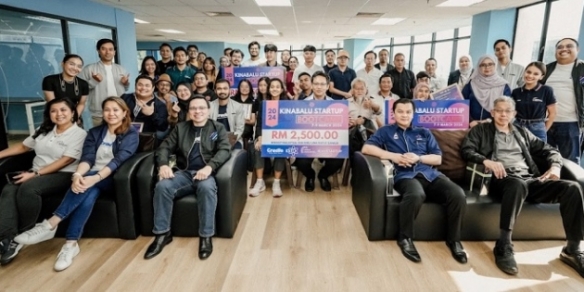ADAX: Lifting Industries up with the help of AI
By Chong Jinn Xiung December 14, 2017
- Advancement in AI needed for Malaysia to jump on the Industry 4.0 bandwagon
- Need for more focus on prescriptive analytics to driven deeper actionable insights
.jpg)
ARTIFICIAL Intelligence (AI) has come into the foreground of everyone’s collective consciousness and will soon be a vital component across various fields such as medicine, finance, retail, news and marketing.
But the question is just how ready is Malaysia to face the coming AI wave of innovation? Asean Data Analytics eXchange (ADAX) data science lead Dr Vala Ali Rohani (pic), spoke to DNA recently about how, in 2017, there is a greater understanding of what AI is capable of achieving for businesses as they prepare for Industry 4.0.
Vala described how manufacturing processes would be made more efficient with interconnected devices in the factory and the example of how there can be greater customisation of products on a deeper level thanks to this.
However, the question remains whether Malaysia is ready for the coming AI driven economy? It comes down to a matter of there being enough talent on hand to make use of the mountains of data residing in companies.
“There needs to be a new method in data science to train talent to use technology to generate more helpful insights and be more data-driven. No doubt AI will be used to improve all level of processes so that humans are able to take on higher level decision making,” he said.
To make this happen, however, all these machine learning algorithms need data scientists and professionals to help process raw data gathered into actionable insights, which then can help decision makers make better judgements and make the right decisions.
One such example was the NACOP (National Consumer Prediction Index) research project framework where a team of academics and data professionals, led by Vala, collaborated to use machine learning to predict Consumer Confidence Index (CCI) based off data gathered over consumer sentiment and social media. This project was carried out by Berkshire Media Sdn Bhd in collaboration with University of Malaya.
Using this method, NACOP was able to gather 1.3 million records over social media to build a big sample size that they were then able to use to show a more accurate index based on consumer purchasing behaviour and even predict coming trends.
The old method of measuring CCI, Vala explained, is typically manual intensive with researchers spending the course of a few months gathering data from 1,000 respondents and releasing the CCI numbers released every quarter.
Using this newer method, he claims that, his team was able to gather 1.3 million records over social media to build a big sample size that could generate a more accurate index that was limited by quarter but can measure CCI by the day.
Application for NACOP, which is set to go commercial by next year, including using it for seasonal analysis to help communication campaign managers find the best time to run campaigns or companies to determine the best time to launch a new product or service.
Still lots to be done
The challenge Vala found in many organisations is that almost 90% of data science projects in Malaysia are focused on descriptive analytics, which is the preliminary stage of data gathering processing that looks at historical data. There is not enough focus on conducting prescriptive analytics that focuses on finding the best course of action based on the data.
“Majority of companies are sitting on mountains of data and just gathering it. Once the data is analysed, many are left wondering what do they do. A better way to go about this is by identifying the business problems first, set a target and produce data that lead to actionable insights,” he advised.
He adds that in order for an organisation to be data-driven, there needs to be support from all levels of the organisation from operations all the way up to the C-level management. Even if every data science project produces results with actionable insights but is not used by decision makers, then all the effort is wasted.
He is nonetheless optimistic that Malaysia has all the right capabilities to take advantage of the coming AI age thanks to good infrastructure for data analytics and initiatives like the Data Star programme, a collaboration between Malaysia Digital Economy Corporation (MDEC) and ADAX to help meet the Malaysian government’s goal of having 20,000 data professionals by 2020.
Related Stories:
MDEC to spearhead bigger push for big data adoption in Malaysia
Relook your business models, leverage on data urges ex-Axiata Group CFO
Customer analytics still lacking in banks: Teradata
For more technology news and the latest updates, follow us on Facebook, Twitter or LinkedIn


